Long Eaton - West Park
w/e 09 October 2016
All of this week's pictures were
taken with a Kodak DX6490

Part 02 - Includes Trees 8 to 13
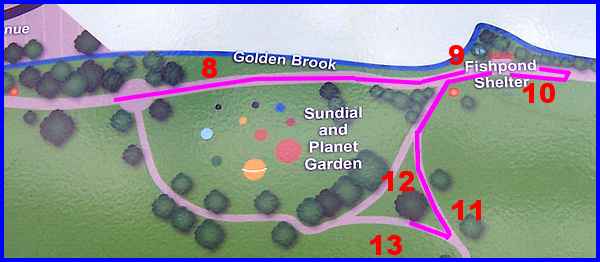
On the extract above taken from an information board in the park,
the pink line shows the route we followed in this second part
of the series and the numbers in red, the approximate locations
of trees numbered 8 to 13 in Erewash Borough Council's Tree Trail
leaflet.
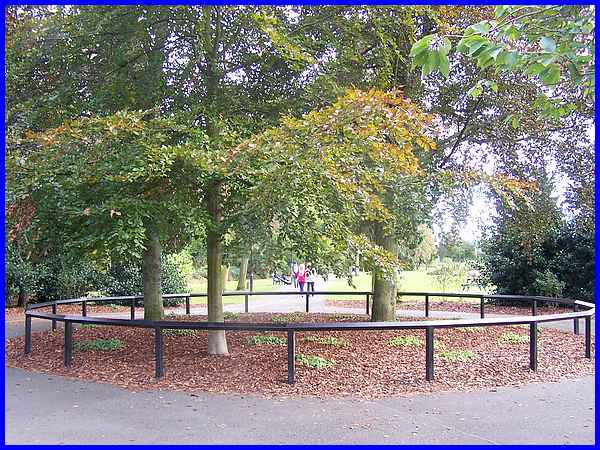
We resumed our walk in the park at a junction in the paths and
continued straight ahead (after passing the fenced trees that
is) to follow the path by the Golden Brook.
|
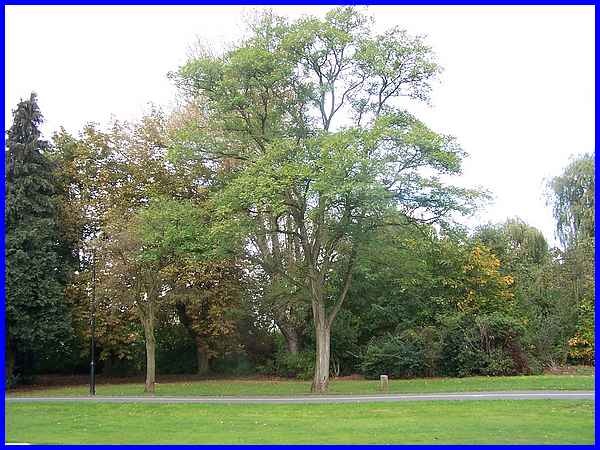
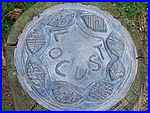 To the
left of the path is tree number eight which the leaflet records
as a False Acacia. Rather confusingly the identification post
states that this is a Locust Tree although further investigation
revealed False Acacia and Black Locust are alternative names
for the same species. Whatever you call it, in autumn it bears
brown seed pods which split to release kidney shaped beans. These
are preceded in the summer months by sweet scented pea like flowers
loved by insects for the nectar they produce. Other features
of the tree are long spines on the branches and deep vertical
fissures on the bark of old trees. To the
left of the path is tree number eight which the leaflet records
as a False Acacia. Rather confusingly the identification post
states that this is a Locust Tree although further investigation
revealed False Acacia and Black Locust are alternative names
for the same species. Whatever you call it, in autumn it bears
brown seed pods which split to release kidney shaped beans. These
are preceded in the summer months by sweet scented pea like flowers
loved by insects for the nectar they produce. Other features
of the tree are long spines on the branches and deep vertical
fissures on the bark of old trees.
|
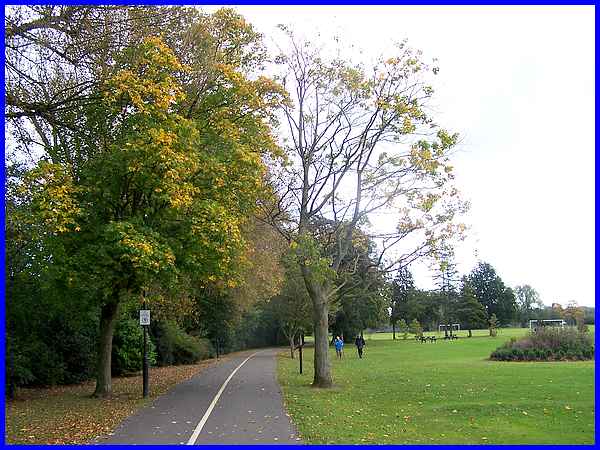
We continued along the path by the Golden Brook and noticed that
some trees were already showing their autumn colours. The white
line on the path is intended to segregate pedestrians on the
right from a cycle route on the left. Parts of the park are likely
to becoming waterlogged in bad weather but when it's dry, many
people prefer to walk on the grass and leave the path clear for
the bikes.
|
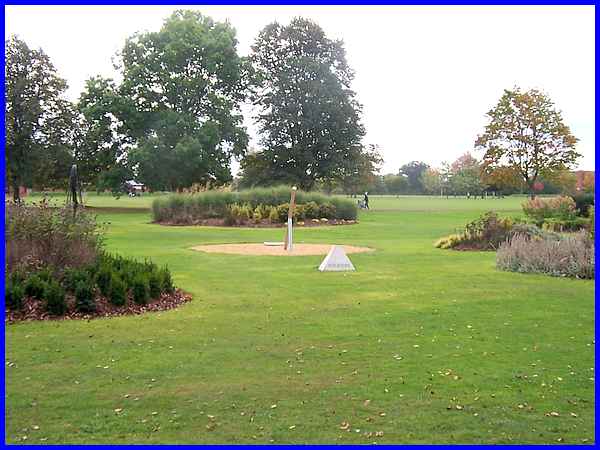
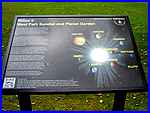 A feature
in West Park and to the right of the Golden Brook path is the
sundial and planet garden. According to an information board,
it was initiated by the Friends of West Park and is intended
to be a fun garden bringing more colour into the park. The nine
flowerbeds are colour themed and spiral outwards from the sundial
with "hotter" coloured plants to represent the planets
closer to the sundial and darker coloured flowers, grasses and
shrubs used for those further away. The board also gives information
on how to tell the time with the sundial by using the black mosaic
in the winter and the yellow mosaic during the summer months. A feature
in West Park and to the right of the Golden Brook path is the
sundial and planet garden. According to an information board,
it was initiated by the Friends of West Park and is intended
to be a fun garden bringing more colour into the park. The nine
flowerbeds are colour themed and spiral outwards from the sundial
with "hotter" coloured plants to represent the planets
closer to the sundial and darker coloured flowers, grasses and
shrubs used for those further away. The board also gives information
on how to tell the time with the sundial by using the black mosaic
in the winter and the yellow mosaic during the summer months.
|
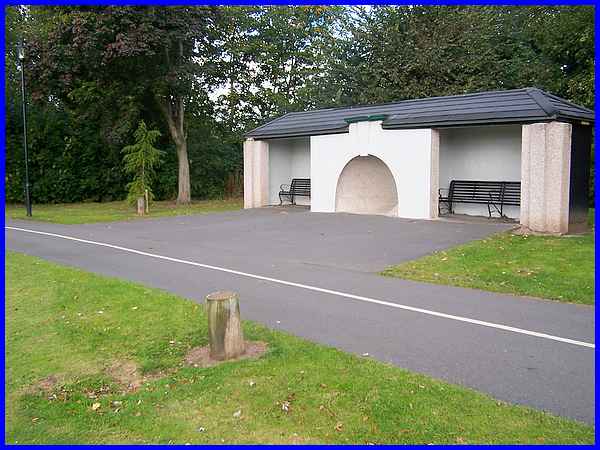
We passed the next junction in the paths and walked a little
way beyond the Fishpond Shelter. Looking back the small tree
next to the shelter (number 9) is a Deodar Cedar. Its native
habitat is the Western Himalayas where it is also known as the
"Tree of God" or the "Sacred Indian Fir".
Tree number 10, a Black Walnut, is conspicuous by its absence
although an identification post remains in situ.
|
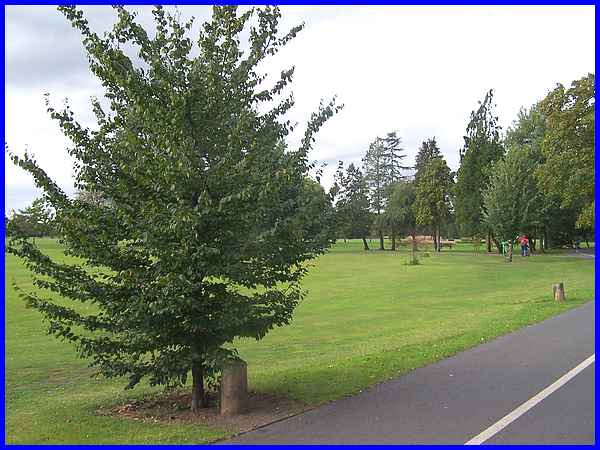
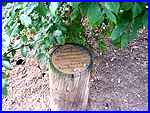 Nearby
though is another identification post by a Common Hornbeam although
this is not featured on the Tree Trail leaflet. The post records
that the tree was planted to mark the fifth birthday of Long
Eaton and District U3A (i.e. University of the Third Age) in
2012. The identification post for the missing tree seen here
on the right also has a similar commemorative plaque and although
the cynic in me suspects vandalism, the demise of the tree could
of course be due to natural causes. The leaflet I am following
was printed some time ago - it's not dated - but natural evolution
will obviously lead to the disappearance of some trees. Nearby
though is another identification post by a Common Hornbeam although
this is not featured on the Tree Trail leaflet. The post records
that the tree was planted to mark the fifth birthday of Long
Eaton and District U3A (i.e. University of the Third Age) in
2012. The identification post for the missing tree seen here
on the right also has a similar commemorative plaque and although
the cynic in me suspects vandalism, the demise of the tree could
of course be due to natural causes. The leaflet I am following
was printed some time ago - it's not dated - but natural evolution
will obviously lead to the disappearance of some trees.
|
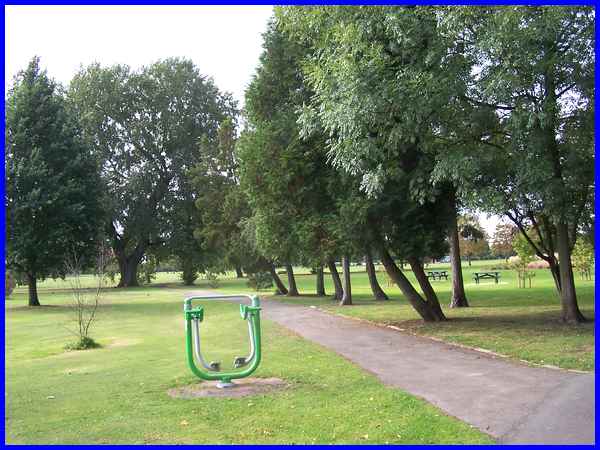
Turning back to pass in front of the Fishpool Shelter again,
we then turned left at the path junction. The picnic tables in
the distance were far more appealing then the keep fit equipment
but we walked down the path to the trees numbered 11, 12 and
13.
|
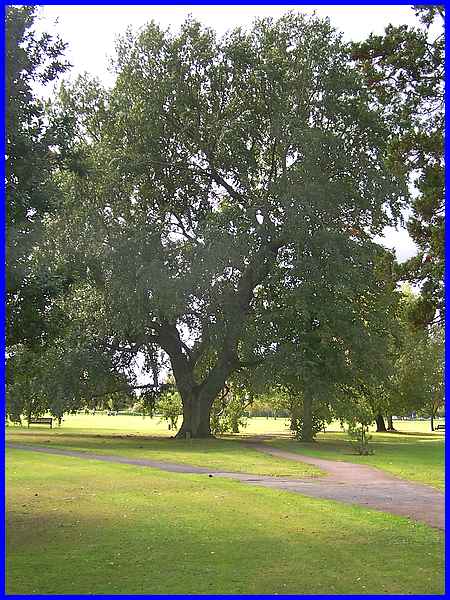
It was tree 12 that we encountered first and this was a Grey
Poplar. Apparently grey poplars are crosses between white and
black poplars which would seem to make sense. They can grow to
heights of 30 metres and dry wood from the trees is very strong
being used for pallets and packing cases.
|
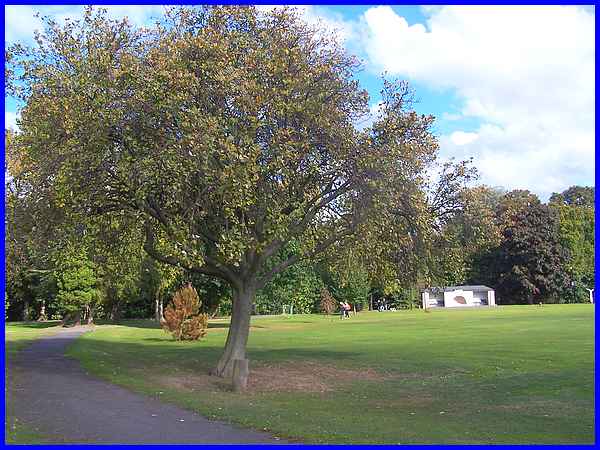
Tree 11 stands across the path from the Grey Poplar and is a
Whitebeam. Seen here looking back towards the Fishpool Shelter,
the Whitebeam is noted for having red berries in autumn and golden
leaves which are just beginning to show. It is native to the
UK and has a long history being named by Anglo-Saxons and used
by them as a boundary marker.
|
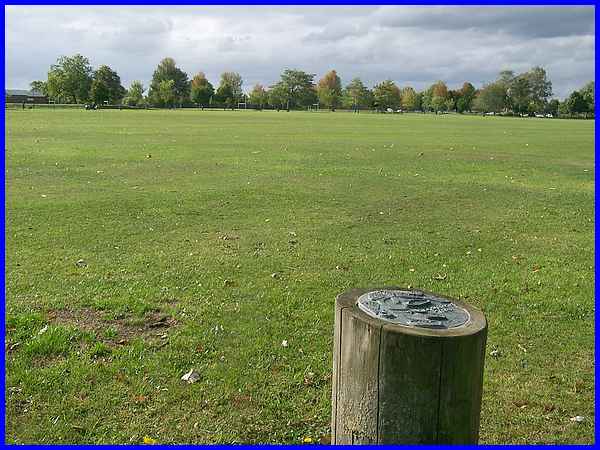
The final tree in this part should have been a Handkerchief Tree
but once again the tree has disappeared from the landscape and
only a bare patch of ground in the lush grass that stretches
away to a football pitch and an identification post betray its
original location. When we return to the park for Part 03 we'll
pick up the route from here and continue our walk of discovery
searching out more exhibits along the Tree Trail.
|

